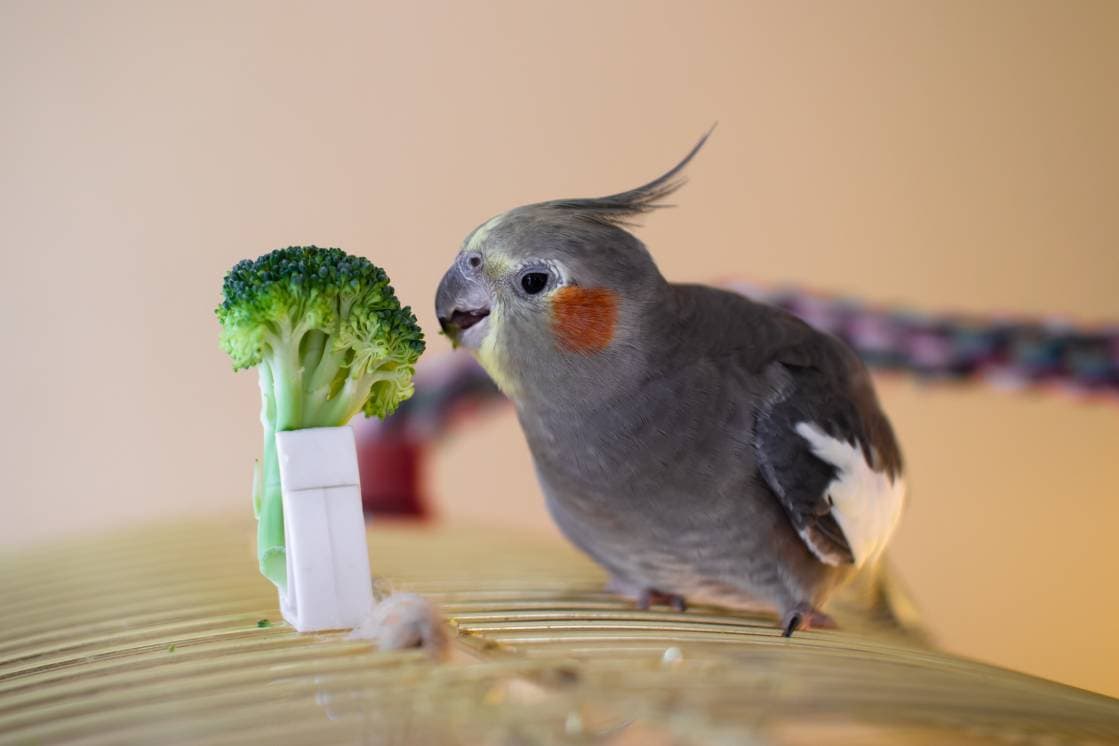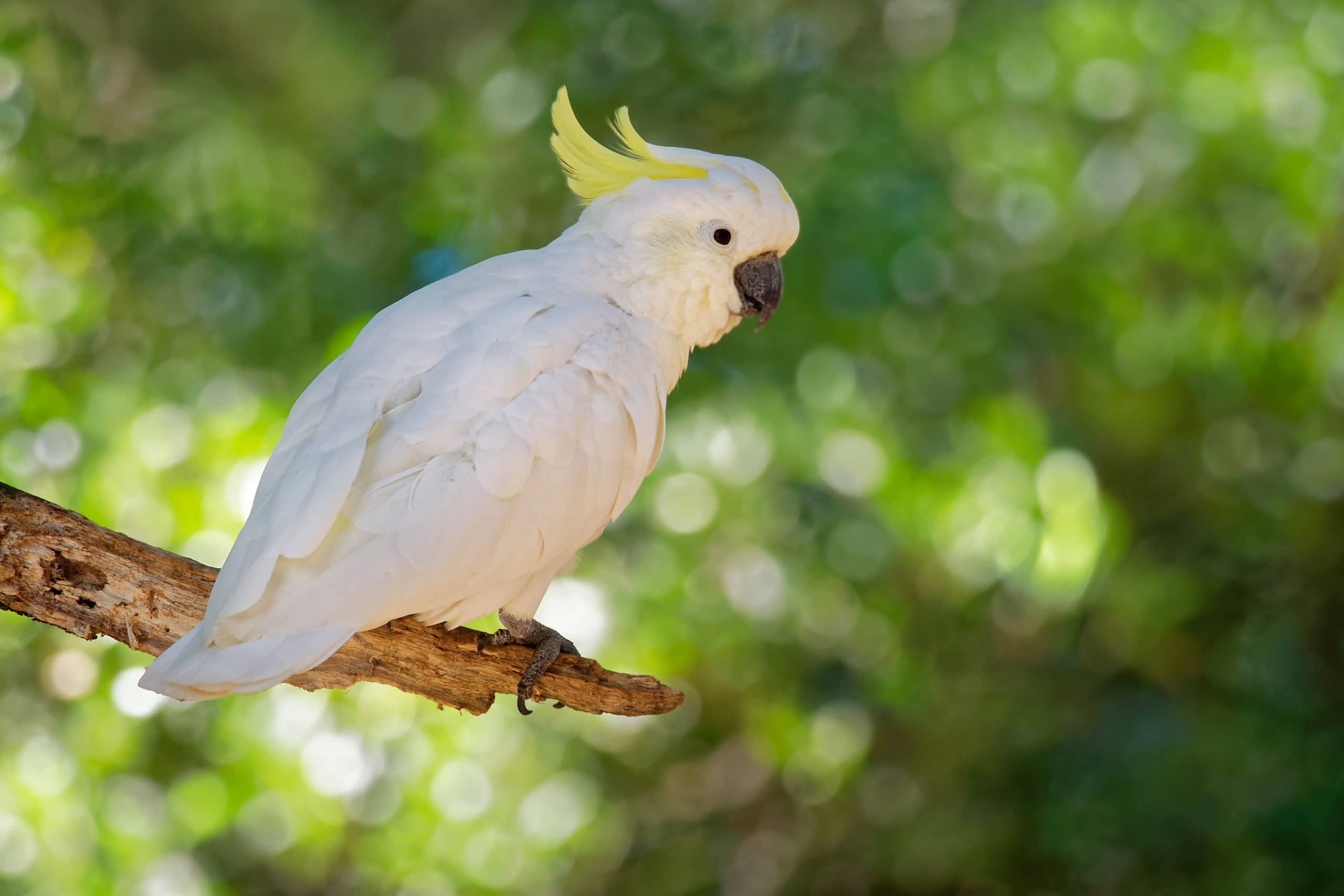
A cockatiel is a small colorful parrot-like bird from the cockatoo family. You can always distinguish it by the prominent crest on the head.
Cockatiels are easier to tame than other parrot species, thanks to their smaller sizes. Plus, they are just as capable of mimicking speech, although it can sometimes be challenging to understand them.
There’s a lot more to know about a cockatiel, but one thing that continuously baffles cockatiel owners is how to determine the bird’s age. Just keep reading, and you’ll discover various ways to do it.
The 12 Ways to Tell the Age of a Cockatiel
If you didn’t own a cockatiel right from its hatching stage, you could never be sure of its age straightaway. However, there are several factors you can look at to help determine the age, including changes in physical appearance.
Cockatiels, just like other birds. Go through several changes as they age. A lot of these changes are similar to the human experience as they age.
1. Beaks
You can know your cockatiel’s age by looking at its giveaway features like the face and beak. A young cockatiel will have an immature “baby” face. It also has bigger exposed beaks, mainly because the feathers at the beak side are short.
On the other hand, older cockatiels have small beaks as the feathers at the beak side cover most parts of the beak.
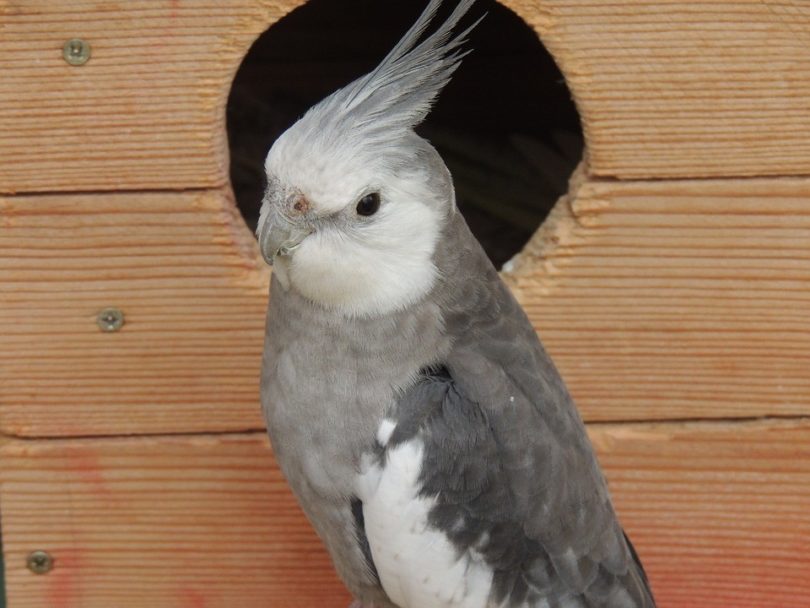
2. Body Size
Mature birds are typically larger than young birds, ranging between 12 to 13 inches in size. You can also notice that the patches on the cheek grow considerably large that they can cover nearly the entire face.
You may want to refrain from buying a bird when an enlarged cheek patch, which means that the bird is very old.
3. Sleeping Hours
Old cockatiels tend to sleep more than young ones. They can sleep for up to 17–18 hours daily besides daytime naps. Young ones sleep the usual 10–14 hours a day.

4. Pelvic Bones
You can use this feature to gauge a cockatiel’s age, primarily if you’ve owned one before.
Female cockatiel pelvic bones widen as they age. When the distance between their legs is wide, then the cockatiel is ready to start laying eggs.
5. Singing Voice
This feature can help with determining a male cockatiel’s age. The reason is that baby cockatiels and females rarely vocalize unless provoked. However, mature male cockatiels usually sing with a pure voice than their younger male counterparts.
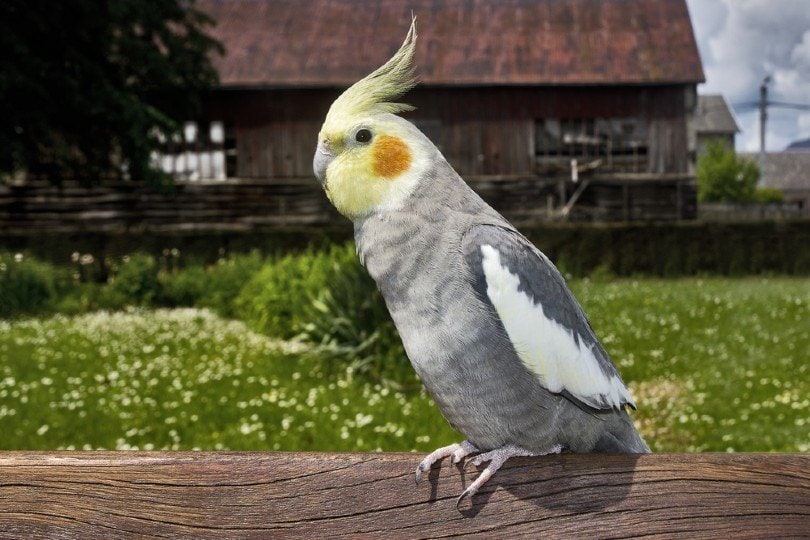
6. Tail Feathers
A cockatiel’s tail feathers are usually equal to the body size until it gets one year old. The feathers then start getting more prolonged than the body after the one-year mark.
7. Nails
Older cockatiels have very long nails that appear cracked and usually bend inwards.

8. Eyes
The eye size is usually notably larger when the birds are young but get smaller as they get older.
9. Crest
A baby cockatiel’s crest is usually short with straight feathers, while mature birds have longer crests that bend slightly backward.

10. Adolescence
Cockatiels reach the adolescent stage when they molt for the first time, at around 6–12 months.
The females start being less colorful while the males change color on their cheeks and at the bottom of their flight feathers.
11. Foot Scales
Just like other birds, a younger cockatiel tends to have smoother skin with fewer scales. However, the scales increase with age, which also makes their skins feel rougher.
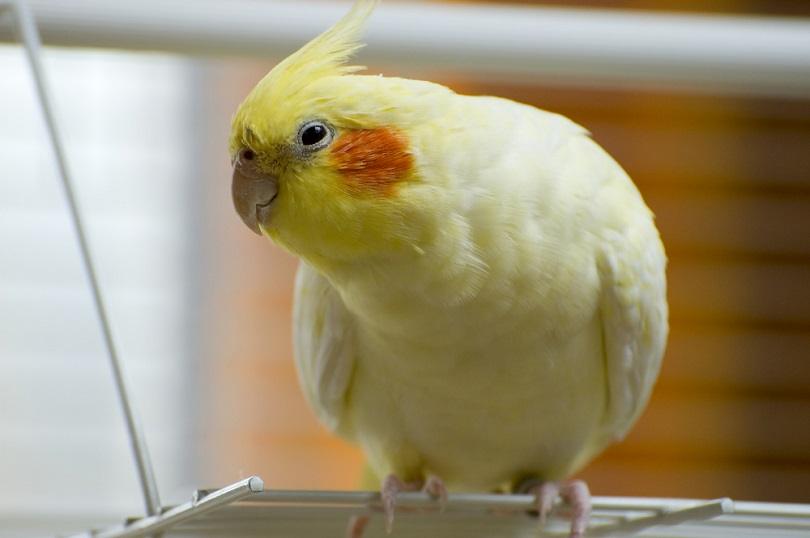
12. Courting Behavior
A cockatiel’s courting behavior can give away its age. Male birds begin displaying courtship behaviors such as strutting and hopping when they are around six months old.
On the other hand, female cockatiels become broody at around 10–18 months. Then, they may start burrowing to prepare a nesting place to lay their eggs.
If you’re new to the wonderful world of cockatiels, you’ll need a great resource to help your birds thrive. We highly recommend taking a closer look at The Ultimate Guide to Cockatiels, available on Amazon.
This excellent book covers everything from the history, color mutations, and anatomy of cockatiels to expert housing, feeding, breeding, and health care tips.
Cockatiel Origins

Cockatiels are native to Australia, where they’re also called quarrions or weiros. These birds live in large flocks in the wild and exhibit characters similar to any other larger bird.
Cockatiels started becoming popular household pets in the 1900s, although it’s no longer possible to trap and export them from Australia. In addition, they are docile, friendly, and easy to breed in captivity, making them a natural fit for human companionship.
Temperament
These birds are attractive as well as friendly, and any bird lover will tell you how delightful it is to own one.
Cockatiel birds are gentle and affectionate birds that love to be petted. They may not mimic your words as parrots do. However, they can bond with you and stay loyal, especially if it was born into captivity and saw you immediately.
The males and females have different demeanors, with males being much noisier than their female counterparts. Female cockatiels don’t vocalize or communicate much. They only do so if they are in the mood or want water, food, or treats.
The only time both genders match their craziness is during their breeding season.
Interesting Details About the Cockatiel
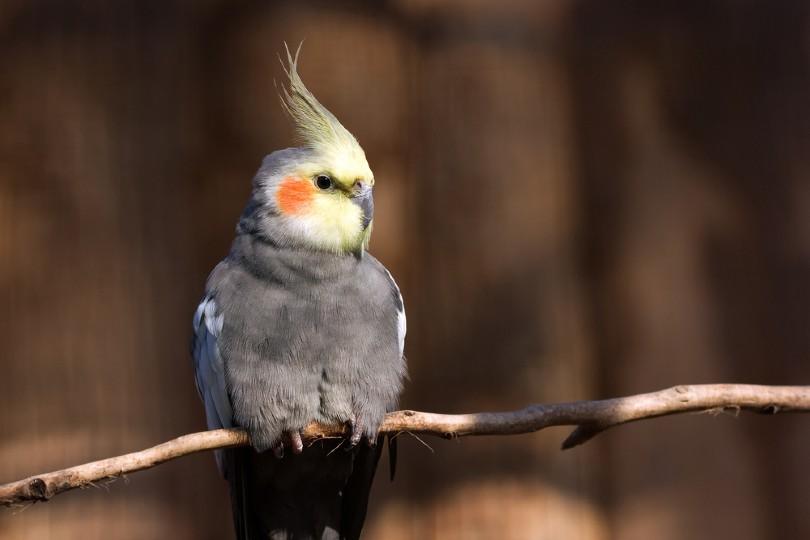
Many people want and own cockatiels around the world. However, very few know just how special and unique these little birds are.
You’ll be surprised at how perfect they are, that you can even use them to explain various complex biological concepts! For instance:
They Rely on Visual Communication
Cockatiels are expressive birds, and they do so using their head crest feathers. A cockatiel can display its “mood” to its owner or other cockatiels by simply changing the position of the crest feathers.
Of course, every bird is unique with its distinctive personality. However, cockatiels generally use a well-laid display system.
For instance, it may straighten the crest to alert you of danger or that it’s curious. This usually happens when it’s seen something new after you startle it or when it gets excited over a treat.
Contrastingly, a flattened crest means that the cockatiel is frightened or angry. It may also include a hissing sound to insist on it.
Imprinting Is Important

A cockatiel establishes a bond with the first thing it lays its eyes on after hatching. This is because baby cockatiels imprint on the first thing they see after they hatch.
This behavior is useful in the wild because it creates a bird ready to join the rest of the flock’s social fabric. However, this ability creates a bird that bonds closely with the owner, which is often desirable for most owners, but it may not be so good in the long run.
The reason is, the bird gets easily depressed if you leave it alone for an extended period. This is why it’s essential to keep more than one cockatiel for companionship.
Final Thoughts
One thing that may make you go for a cockatiel is its longevity. These birds can live as long as 16 to 25 years in captivity.
This means that if you get a recently-hatched baby cockatiel for your kids, they’ll grow right beside each other. Come to think of it, determining its age won’t be based on guesswork anymore!
Featured Image Credit: Bildagentur Zoonar GmbH, Shutterstock




